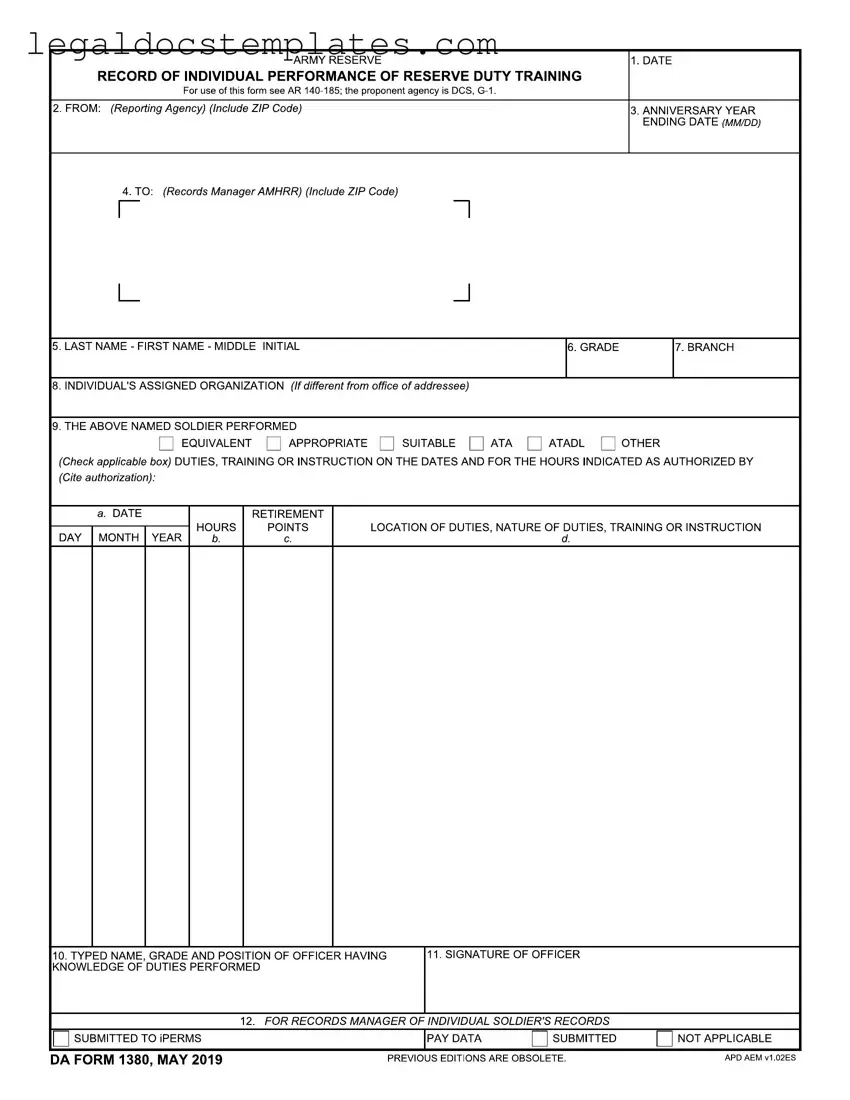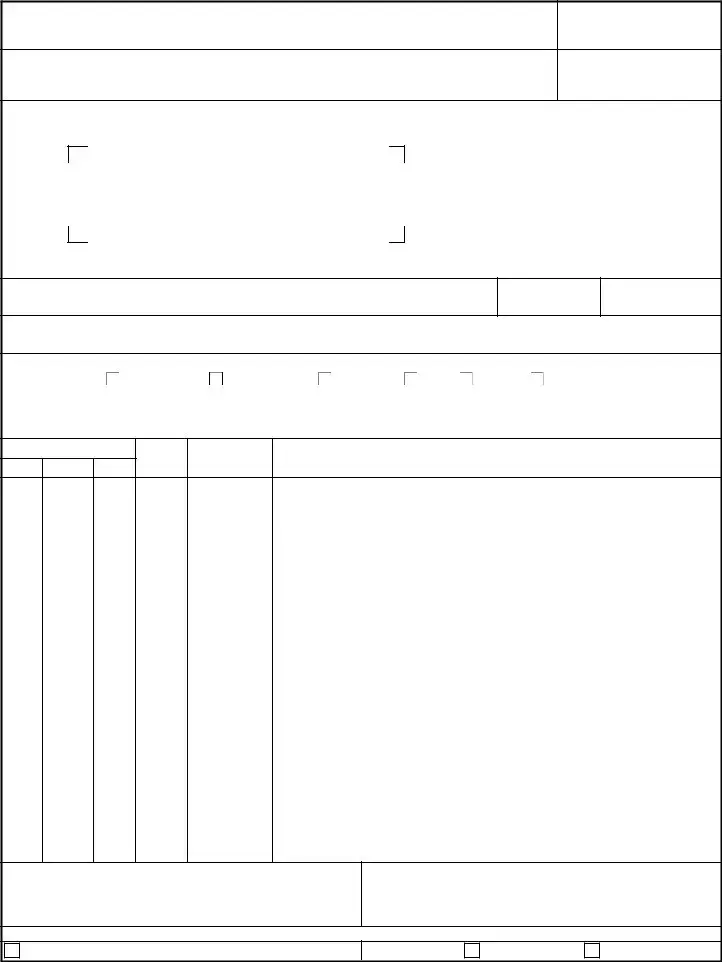The DA Form 1380 is intricately related to the military record-keeping and performance documentation framework, sharing similarities with several other forms. One such form is the DA Form 31, which is used for requesting leave. Both address the administrative side of military personnel management by capturing essential personnel details and their respective activities, albeit DA Form 1380 for reserve duty training and DA Form 31 for leave requests. Each form plays a crucial role in maintaining updated and accurate records, facilitating a structured approach to personnel and duty management within the military.
Similarly, the DD Form 214 closely resembles the DA 1380 in its function of documenting aspects of military service. The DD Form 214, or Certificate of Release or Discharge from Active Duty, is essential for service members transitioning back to civilian life as it outlines their service duration, classification, rank, medals earned, and reason for discharge. Both forms serve as official records that substantiate a service member's military experience and performance, with the DA 1380 focusing on reserve duty and the DD Form 214 summarizing the entirety of active service.
The NGB Form 22, or Report of Separation and Record of Service, for members of the National Guard, also mirrors the purpose of the DA 1380 in terms of documenting military service. Whereas the DA 1380 captures specific instances of reserve duty training, the NGB Form 22 provides a comprehensive overview of a National Guard member’s service, including their discharge status and entitlements. Each form is an integral piece of the service record puzzle, aiding in the establishment of benefits eligibility and historical service documentation.
The DA Form 705, or Army Physical Fitness Test Scorecard, although focusing on a more specialized aspect of service, intersects with the DA 1380's objectives by documenting a soldier’s physical fitness performance. The DA 1380 records duty performances and training, while the DA 705 evaluates physical readiness, a critical component of a soldier’s overall performance and capability. These forms collectively contribute to a holistic view of a soldier's military service, readiness, and contributions.
The DA Form 5960, which is used to authorize basic allowance for housing (BAH) and other entitlements, shares the DA 1380's administrative nature in personnel management. This form captures information essential for calculating and authorizing compensation related to housing and entitlements, highlighting a soldier’s personal and family needs. Together with the DA 1380, these forms facilitate the management and oversight of soldiers' welfare and financial aspects of their service.
The DA Form 1059, Service School Academic Evaluation Report, is another document in the array of military forms akin to the DA 1380, focusing on the academic and professional development aspects of a soldier's career. While the DA 1059 evaluates and documents performance in a training or educational setting, the DA 1380 records duty and training performance in the field or at a unit. Both forms are crucial for keeping track of a soldier's progress and accomplishments, providing a comprehensive record that supports career development.
Lastly, the Army Training Requirements and Resources System (ATRRS) mirrors the DA 1380's intent by digitally managing the details of military training courses and personnel statuses. Although ATRRS is not a form but a system, it parallels the DA 1380's function by documenting, tracking, and managing the various aspects of military training and education. Both ATRRS and the DA 1380 play pivotal roles in ensuring soldier readiness and professional growth within the Army's vast organizational structure.


